Hawraman - Cultural Landscape of the Kurdish Lands
The word “Hawraman” consists of “hawra”, referring to Ahura (or Ahura Mazda), and “man”, which carries the meaning of home or land.
In other words Hawraman (or Uraman) is the land of Ahura, home of Ahura Mazda. The name Hawraman refers to the distinctly Iranian history that belongs to this region and its people. The Kurdish nation which spreads across vast swaths of land, crossing the international borders of Iran, Turkey and Iraq, all speak the Kurdish language or a variation of its dialects. In point of fact, the language of those living in the Hawraman region is referred to as “kurdi” and is of a dialect known as “Uramani kurdi”. This dialect is one of the oldest forms of parlance within the Kurdish language, and today is only spoken by several thousand people inside the Hawraman locale.
Hawraman or Uramanat, Travel to a Beautiful Landscape and Ancient History
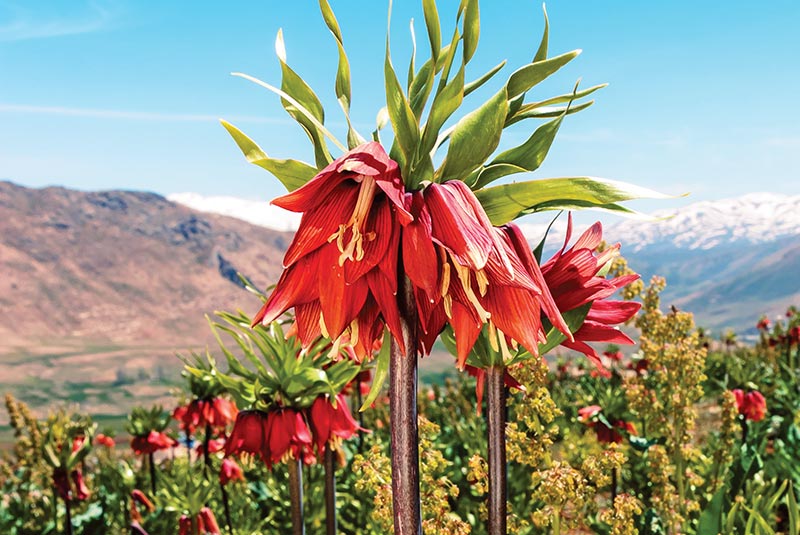
When spring comes to the Iranian prairies it seems as though a green carpet, budding with a multitude of flowers, has been rolled out across the land. As the mountain snows begin to melt the run-off will overflow the rivers and bring life back to the plains after a heavy winters sleep. Bird song can be heard from every corner of the woods; entering one’s ear with a promise of the coming Nowruz. When the beauties of spring return to Iran it’s the perfect time to travel; to stroll the country and explore picturesque panoramas. This article will explore the west of Iran, to see what spring holds in Kurdistan. A land of verdant velvet mountains, oak trees and roots to an ancient nation still extant. Travelling westward to see Iranian Kurdistan in the bloom of spring, a paradise captured within the Zagros mountains, is an experience one cannot forgo.
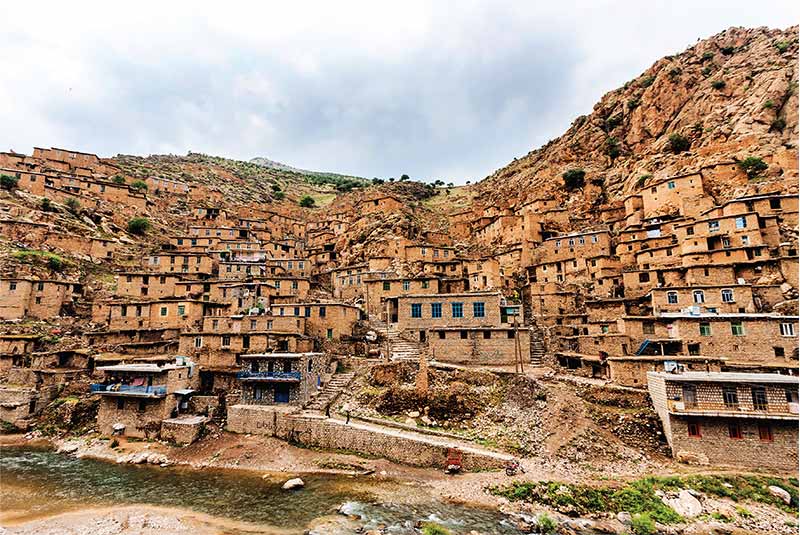
Kurdistan – the Home of Kurdish People
Kurdistan is a province lying on the Iranian border with Turkey and Iraq; sharing Kurdish cities across both divides. It is a province where nature and culture collide. This land is located at a crossroads between the two major civilisations of Iran and Mesopotamia; thusly emphasising the importance of its geographic space. Documents of this land’s ancient history and those whom settled upon it date back as far as the Palaeolithic period. Evidence unearthed from archeological excavations confirms two major components of this area; that a tradition of tool making began in this region around the Palaeolithic era, and that a history of Kurdish nation can be traced back to approximately 2000 years BC to the time it is assumed that Aryan tribes migrated to the Iranian plateau.
With the Aryan migration this land and the people of Kurdistan were placed under the authority of a government known as Medes; surrounded by numerous great civilisations. From this cultural exchange four civilisations arose: Urartu in the north, Assyrian in the west and Elam and Sumer in south and southwest.
The word “Kurd” denoted an independent nation for more than 2500 year; established since the Achaemenids reign. However, official usage of the word “Kurdistan” only dates back to the time of the Seljuks. Indeed, the word Kurdistan consists of two parts: “Kurd”, representing the Kurdish nation and its people, and “-stan”, denoting the organised formation of a land. The physical territory of the Kurds has forever been synonymous with pristine natural beauty; particularly during the springtime. The region of Uraman is especially regarded for its natural landscapes and for having a beauty doubly enriched by the life which revolves around its Kurdish identity. Uraman is known as a favourite destination for lovers of historical and eco tourism alike.
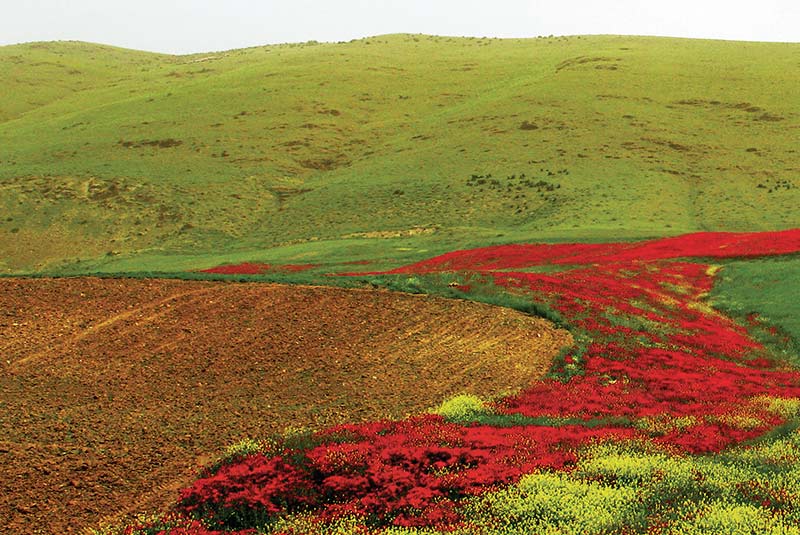
Uraman: Life in the Embrace of Nature
Uraman, or Hawraman, is a gloriously leafy region of Kurdistan with plentiful fields of Fritillaria flowers blossoming across the Uraman river valley. Sirwan river is the longest river of Kurdistan. It crosses the Iraq-Iran border and flows into the Persian Gulf. Sirwan plays an important role in the region’s ecosystem; providing indispensable habitats for the local wildlife. The Zagros mountains are known for their oak forests, however, close to the Sirwan river there can be found a multitude of other tree species; including willow, walnut, sour cherry, apple and pear trees.
The word “Hawraman” consists of “hawra”, referring to Ahura (or Ahura Mazda), and “man”, which carries the meaning of home or land. In other words Hawraman (or Uraman) is the land of Ahura, home of Ahura Mazda. The name Hawraman refers to the distinctly Iranian history that belongs to this region and its people. The Kurdish nation which spreads across vast swaths of land, crossing the international borders of Iran, Turkey and Iraq, all speak the Kurdish language or a variation of its dialects. In point of fact, the language of those living in the Hawraman region is referred to as “kurdi” and is of a dialect known as “Uramani kurdi”. This dialect is one of the oldest forms of parlance within the Kurdish language, and today is only spoken by several thousand people inside the Hawraman locale.
Kurdish clothes are uniquely designed for life in this land. Uraman people, mainly women, wear vividly colourful clothes dyed blue, yellow and red; such colours contrast spectacularly with the predominant greenery of the landscape. To ensure comfort men tend to walk in a particular footwear called a “kalash”. In the past this light cotton summer shoe was worn only in Hawraman, but nowadays they can be seen across several regions of Kurdistan. The upper part of the shoe is made of a woven cotton while the bottom is made of strongly pressed cloth. Light weight, soft and flexible, these shoes are designed for trampling across the mountain paths. However, the garments of Kurdistan are not the only items created in harmony with nature. Terraced housing is another example of everyday life built to be compatible with the surrounding environment. In the foothills of the Zagros and Alborz mountains villages are designed to be in full symbiosis with the mountainous topography. This is achieved by building the houses one on top of another; following the terrain of the upwards incline. The roof of a house set below another doubles as the patio of the house above. The village of Uraman Takht is one such village; indeed, most of the houses in this village are built from piled stone and are held in place without any mortar. The local population believe their village used to be of previous political significance to the Kurdish nation and consequently assumed the suffix of “tahkt”, meaning of “centre of governance”, to its title. In spring the road which connects Uraman Tahkt with the closest city, Marivan, offers breathtaking views of the soft rolling hills leading into the sky-scraping mountains of the Zagros.
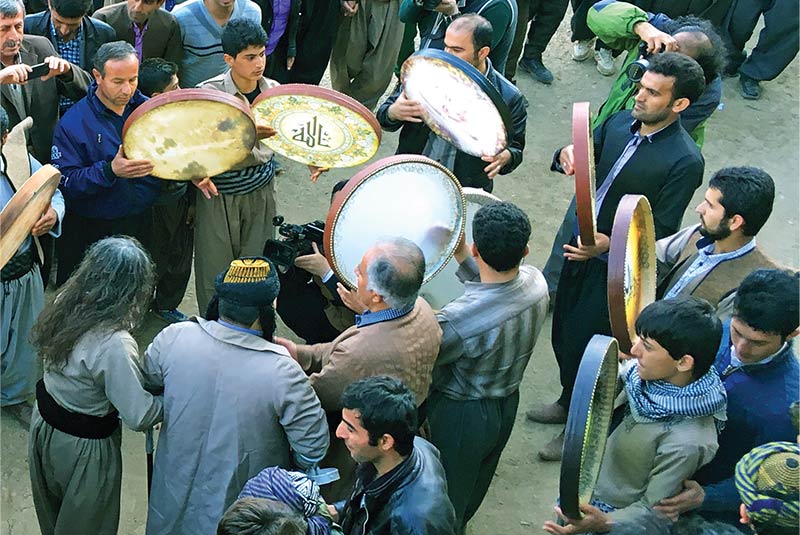
‘Pir Shaliar’ and the Celebration of Holy Marriage
As has been previously elaborated, nature and culture are closely-knitted together in the region of Hawraman. People’s lives are very much informed by the changing seasons, and subsequently their festivities and rituals reflect this truth. Among such celebrations include the symbolic wedding ceremony of Pir shaliar held annually during winter. Legend has it that a Zoroastrian priest, in Persian translated to “pir shaliar”, was treating the deaf-mute daughter of an Iranian shah. As a gesture of appreciation the shah gave his daughter to the priest to be his wife. Locals believe that the wedding took place in the village of Uraman Takht, and as such village folk will mark the anniversary by restaging the wedding ceremony in a symbolic ritual. Festivities will commence on the first Friday before winter folds into its second half. Celebrations are to last for three weeks. The first stage of celebrations are called “spreading the news”. Those gardeners whom maintain the neighbourhood parks with donations from the pir shaliar festival will go about the village telling everyone that the celebrations can begin. Children will then start to bring walnuts into every household of the village. The owner of the house should thank these children by gifting them money, wheat or flour which they are to use for the Pir shaliar ceremony. A town crier will go to nearby villages and announce the beginning of these celebrations. The following week, on a Tuesday, merriments will continue with a ceremony called “kuteh kuteh”. Youths will colour their faces and go from house to house trying to scare the inhabitants, but those within should in turn chase the children; laughing and pretending to punish them. After sunset a ceremony called “qahla rouchini” begins. The youths of Uraman Takht and neighbouring villages will climb the rooftops of houses and run through open windows dropping long cloths within. The inhabitants will then wrap money, wheat, walnuts or anything they have to hand into the fabric of these cloths.
At sunrise the following day villagers will sacrifice a sheep, goat, calve or cow and use the meat to cook a thick soup called “ash” specific to this traditional celebration. Later that day, after the feast, villagers will form a line and dance hand in hand accompanied by the beats of the “daf”; a Middle Eastern drum with a membrane made from animal skin and equipped with small cymbals on the inside. Older members of the village will be placed at the front of the line while the children take up the rear. After this dance villagers will gather in the home of their elders where the belongings of the pir shaliar are kept in a relic case. The relics will be taken out and one by one everyone will kiss these cherished objects and wish for good fortune.
Celebrations will end on Thursday of the following week with men going to the graveyards carrying yoghurt and a piece of bread filled with walnuts; eating as they walk. Men will tie a piece of cloth called “dakhil” between the trees and the wall of the graveyard in the hope that their wishes to be fulfilled, and thereupon walk to the grave of the pir shaliar while singing mystical poems and beating a drum. At sunset the winter celebrations of these three weeks are drawn to a close, however, the festivities are to begin again in the springtime with a ceremony known as “kumsa”. The timing of this ceremony falls upon the first of six Zoroastrian festivals called “Gahanbar”; it is scheduled to take place at the beginning of May just before the villagers move to cooler climates for the summer months. Kumsa is the name of the stone in the pir shaliar’s tomb and is said to have a mythical meaning for the Uraman people.
Indeed, the locals believe a farmer once visited the pir shaliar and asked him to provide a good harvest and livelihood. While conversing the farmer shared“dolma”, or dolmeh, with the pir shaliar; a stuffed vegetable dish mostly of grape leaf or eggplant. The pir shaliar told the farmer to hit a single stone with another and to take the broken pieces home as an object that had been consecrated. From that time onwards every year in spring villagers go to the pir shaliar’s graveyard to hit a large rock with smaller stones. They will each then take a shard of the broken stone to keep in their homes as an amulet for prosperity in their crops and an abundant supply of dairy produce. No one will dance or sing at this ceremony but dolma will be brought to commemorate the meeting of the pir shaliar and the farmer. A meal of dolma will be had at the shaliar’s tomb. Locals believe that this ceremony has been held continuously every year for the last 900 years, and despite the passage of time Kurds (though mainly the people of Hawraman) still consider the pir shaliar a generous man; indeed, a saint who is credited with performing miracles.
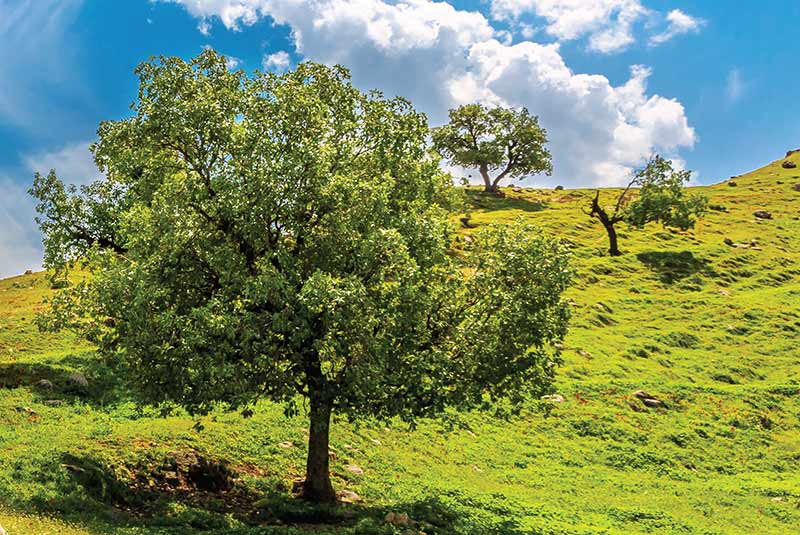
By travelling to Kurdistan and seeing its wonders one can experience diverse natural beauties. The ancient history of this unique geography and culture is still central to the Kurdish people, and even after thousands of years they still honour their authenticity; maintaining their language and dialects, holding to a traditional dance, music and song, wearing gloriously colourful clothes and fighting doggedly in the face of hardships. To this day the pir shaliar, though a mythical figure, represents good luck and blessings to the Kurds.
By: Nasim Mohammadi
MA in Iranian studies and tourism
Translated by: Andrea Bayrak
Article: Gilgamesh Heritage & Tourism Magazine. No.4 Spring2018 The Annual Renaissance
References:
Farzadmehr, Majid. (2010), “Kordestan: Sarzamin-e Kohan”. Mirdashti publication, Tehran.
Zarei, Mohammad Ebrahim. (2002), “Simaye Farhangi-e Ostan-e Kordestan”. Cultural Heritage, Handi crafts and Tourism Organization of Iran publication, Tehran.
Zarei, Mohammad Ebrahim. (2013), “Asar-e Farhangi Bastani va Tarikhi-e ostan-e Kordestan”. Sobhan Noor publication, Tehran.
Shams, Esmaeel. (2014), “Pir Shalyar”, Cultural Encyclopedia of Iranian People, volume 2. Center for the Great Islamic Encyclopedia publication, Tehran.
Mahmoodi Aznaveh, Saeid. (2006), “Kordestan: Negin-e Sabz”. Gooya House of Art and Culture publication, Tehran.
Mahmoodi Aznaveh, Saeed. (2005), “Kordestan”. Gooya House of Art and Culture publication, Tehran.


Comment
Leave a Comment